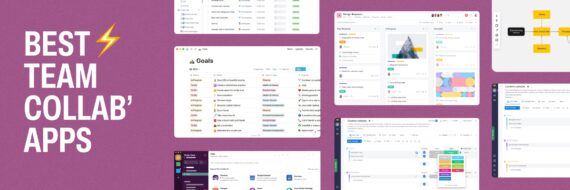If you don’t know who you are designing for, how can you make sure that your UX design is relevant? This is exactly why user persona development to help refine your target user is such a crucial part of the UX design process. In this article, we’ll look at what a user persona is, some of the ways you can make user personas effective and start implementing persona development as part of your design process.
What is a User Persona?
A user persona is a representation of your ideal target user. You’ll often hear marketers talking about user personas, but they’re pretty useful for design teams too. That’s because user personas prevent you from designing in a vacuum. Instead, you can create apps, websites and interactions that specifically address the needs and pain points of your ideal customers.
User personas are fictional, but they’re based on real people, so they can serve as a useful shorthand when addressing design issues. If you’re creating interactions for tech-savvy Jenny, it’s easier to decide what to do than when you design for an unknown user.
High level of empathy is key in user experience, and it’s harder to do that without knowing who the users are.
In many cases, companies will have more than one user persona to reflect different segments of their target audience. That’s because user personas are most effective when they’re specific. Hila Yonatan comments: A common mistake when creating user personas is not asking the right questions. It’s easy to go for “generic”, because they make sense and don’t require diving deeper into process mapping. Some products could benefit from addressing geo-based use-cases, while others should avoid this mindset altogether. For example, there are sets of persona-defining questions that are especially relevant for eCommerce, while the very same questions don’t provide value when planning a corporate system.
You can learn more about user personas in our article on using user personas to create a great user experience.
🎬 Learn what Slickplan can do!
We filmed a short video to show you exactly how to use Slickplan
Examples of What Makes User Personas Effective
There are several ways that user personas help with the design process. Four key ways include:
- Helping you to identify your ideal customer
- Spelling out the pain points you’re trying to address
- Helping with user research
- Modifying product designs
Next, we’ll take a look at these benefits in more detail.
Identify Your Ideal Customer
The ability to identify your ideal customer is one of the key reasons why user persona development is so effective. While a user persona is a fictional representation of your target audience, it’s important to base this on actual users and what they do in real life. Otherwise, you can make assumptions about what your customers need and end up going down the wrong path, design-wise.
Identifying your ideal customer and target audience is all the more important when developing a new or minimum viable product.
Hila Yonatan says One of the dangers of failing to integrate persona development into the UX design process is creating products with the wrong target audience in mind. Neglecting user personas might result in the creation of the wrong use-cases, for example the one which solves the team’s problems, rather than the ones that the target audience actually faces. It’s easy to create a product “for yourself”, which might lead to creating the “right product” for the wrong people – meaning, failure of the product entirely.
Mark D. Hall, UX Researcher, UX Metrics Instructor, UCSD adds that organizations that don’t integrate personas into their UX design process risk:
- Missing an opportunity to empathize with the real users of their site or product. By failing to document user personas, team members (especially software developers, in my experience) may falsely assume “the users are like me.” For most sites and products I’ve been involved with, this is not the case (users know much less).
- Over-generalizing their target users by defining them with only demographic characteristics (age, gender, income, etc.). In order to accurately capture the mindsets of their users, the UX team needs to include the following in their personas:
- What they know about your product and brand;
- Their motivations (ready to act now, or need to be sold?);
- Their intents (what they most want to see and do).
In other words, the more data on real users you feed into persona development, the better you’ll be able to use those personas to design and deliver what those customers need and want.
Find Pain Points
Your product or service is a solution to your customers’ problems. But you have to know what those problems are to be able to solve them. One way to get this information so you can integrate it into user persona development is to use focus groups to understand how people use your product or service. These user groups, says Jakob Nielsen, can help you assess user needs and feelings. However, he warns that seeing how people actually interact, for example via user testing, is also crucial. Per Hila Yonatan, There’s a missed opportunity in overlooking specific pain points that cause abandonment or failing to upsell. Failing at persona integration opens up the possibility of missing out on important demographics and potential clients – due to failing to adjust the product to meet specific expectations and monetize them. Products can wrongfully be aimed at the general public (for example, when the client believes that the product is for ‘everyone’).
Prepare for User Research
If user research helps you create user personas, creating fictional user personas can also help you prepare for user research. This is something you can use at an early stage of product development to get an initial idea of what users need.
It’s important to emphasize that this is just a starting point. Once you get into the design process, you have to test your assumptions. Otherwise, you could end up missing the mark completely, like Coca-Cola’s apocryphal product reboot fiasco. As Hila Yonatan points out, a common mistake is
A persona that is created without solid research, not being based on real people and focus groups, and relying on estimations. In cases where the hypothesis isn’t being tested in an initial state, it’s easier to miss the target audience. I would recommend making adjustments based on information in order to create a clear advantage. For example: if age verticals are meaningful in the finalized product – personas should be created with age-based flows in mind.
Another common mistake is:
Basing their personas on incomplete data. Some UX teams do limited user research, then ‘fill in’ missing details in the persona template. These assumptions, if they’re not data-driven, can be inaccurate, or just plain wrong. And wrong assumptions result in invalid (and indefensible) persona documents.
Modify Product Designs
One of the main points of creating user personas is to improve your design decisions, so you meet users’ needs. If your personas reflect customers’ wants, needs, and pain points, you’ll be able to design with these in mind.
This is something you need to do throughout the design process, not just at the start. As you’re going through the design process, you can ask yourself at every turn whether this decision will help your ideal user or stop them from achieving what they need to achieve. Mark D. Hall adds Personas aren’t useful unless they’re referenced early and often. So, right after the UX Lead creates the ‘version 1’ personas, she should share them with the team, and ‘post to the wall’ (whether real or virtual). Later, towards the end of the design cycle, the UX Lead should cross-check the in-progress design against the assumptions inherent in the persona. By doing so, she’ll complete a ‘closed loop’ validation of the design solution.
Think visually. Improve UX with Slickplan
Build intuitive user flows, stronger customer journeys and improve information architecture.
How You Can Start Implementing User Personas Into a Design Process
When you’re ready to start your design process, here’s how you can start working with user personas. First, it’s important to gather data. This can be from information you already have such as user flow analytics, customer service interactions, and the like.
Do user research to figure out key demographics, interests and pain points. The example below includes musical tastes, media usage, and much more.
 Source: Behance
Source: Behance
And here’s another example that includes personality traits, environment, and responsibilities.
 Source: Behance
Source: Behance
Think about typical situations with your website, app or product that your user personas will encounter. Think about how they will achieve their goals given what you know about them. This will help you see where you need to improve aspects of UX design.
Ideally, user persona creation should be a team effort, as Hila Yonatan points out: The team is a factor. The people that work on the product have to be clear on the same conclusions. Both positive and negative bias towards specific personas should be recognized by the team, making sure that the right message comes across. Prior experience of team members should be taken into account, because it helps in clarifying who the persona actually is.
When you integrate user personas effectively into your design process, you end up with a better product.
Understanding the similarities between various personas could be key to tapping into “quick wins” by solving problems in advance – it increases the chances of creating a product users love and feel delighted about.








 X
X

